Seismic Imaging of Seafloor Deformation Induced by Impact from Large Submarine Landslide Blocks, Offshore Oregon
Abstract
:1. Introduction
2. Materials and Methods
3. Results
3.1. Landslide Characteristics and Seismic Geomorphology
3.2. Sedimentology and Physical Properties
4. Discussion
4.1. Impact-Induced Deformation
4.2. Influence of Seismic Strengthening
4.3. Role of Gas Hydrates
4.4. Tsunami Hazard Implications
5. Conclusions
Author Contributions
Funding
Acknowledgments
Conflicts of Interest
References
- Moore, G.W.; Moore, J.G. Large-scale bedforms in boulder gravel produced by giant waves in Hawaii. Geol. Soc. Am. Spéc. Pap. 1988, 229, 101–110. [Google Scholar]
- von Huene, R.; Bourgois, J.; Miller, J.; Pautot, G. A large tsunamogenic landslide and debris flow along the Peru Trench. J. Geophys. Res. Solid Earth 1989, 94, 1703–1714. [Google Scholar] [CrossRef]
- Harbitz, C.B. Model simulations of tsunamis generated by the Storegga slides. Mar. Geol. 1992, 105, 1–21. [Google Scholar] [CrossRef]
- Jiang, L.; LeBlond, P.H. The coupling of a submarine slide and the surface waves which it generates. J. Geophys. Res. Oceans 1992, 97, 12731–12744. [Google Scholar] [CrossRef]
- Lee, H.J.; Kayen, R.E.; Gardner, J.V.; Locat, J. Characteristics of several tsunamigenic submarine landslides. In Submarine Mass Movements and Their Consequences; Locat, J., Mienert, J., Boisvert, L., Eds.; Springer: Dordrecht, The Netherland, 2003; pp. 357–366. ISBN 9789401039734. [Google Scholar]
- Watts, P.; Borrero, J.C. Probability distributions of landslide tsunamis. In Proceedings of the Tsunami Symposium 2001, Seattle, WA, USA, 7–9 August 2001; Session 6. pp. 697–710. [Google Scholar]
- Tappin, D.R.; Watts, P.; McMurtry, G.M.; Lafoy, Y.; Matsumoto, T. Prediction of slump generated tsunamis: The July 17th 1998 Papua New Guinea event. Sci. Tsunami Hazards 2002, 20, 222–238. [Google Scholar]
- McAdoo, B.G.; Watts, P. Tsunami hazard from submarine landslides on the Oregon continental slope. Mar. Geol. 2004, 203, 235–245. [Google Scholar] [CrossRef] [Green Version]
- Watts, P. Probabilistic predictions of landslide tsunamis off Southern California. Mar. Geol. 2004, 203, 281–301. [Google Scholar] [CrossRef]
- Løvholt, F.; Harbitz, C.B.; Haugen, K.B. A parametric study of tsunamis generated by submarine slides in the Ormen Lange/Storegga area off western Norway. In Ormen Lange—An Integrated Study for Safe Field Development in the Storegga Submarine Area; Solheim, A., Bryn, P., Berg, K., Mienert, J., Sejrup, H.P., Eds.; El Sevier: Amsterdam, The Netherland, 2005; pp. 219–231. ISBN 0080446949. [Google Scholar]
- Haugen, K.B.; Løvholt, F.; Harbitz, C.B. Fundamental mechanisms for tsunami generation by submarine mass flows in idealised geometries. In Ormen Lange—An Integrated Study for Safe Field Development in the Storegga Submarine Area; Solheim, A., Bryn, P., Berg, K., Mienert, J., Sejrup, H.P., Eds.; El Sevier: Amsterdam, The Netherland, 2005; Volume 22, pp. 209–217. ISBN 0080446949. [Google Scholar]
- Grilli, S.T.; Watts, P. Tsunami generation by submarine mass failure. I: Modeling, experimental validation, and sensitivity analyses. J. Waterw. Port Coastal Ocean Eng. 2005, 131, 283–297. [Google Scholar] [CrossRef]
- Ward, S.N. Landslide tsunami. J. Geophys. Res. Solid Earth 2001, 106, 11201–11215. [Google Scholar] [CrossRef] [Green Version]
- Tinti, S.T.; Bortolucci, E.L.; Chiavettieri, C.I. Tsunami excitation by submarine slides in shallow-water approximation. Pure Appl. Geophys. 2001, 158, 759–797. [Google Scholar] [CrossRef]
- Goldfinger, C.; Kulm, L.D.; McNeill, L.C.; Watts, P. Super-scale failure of the southern Oregon Cascadia margin. Pure Appl. Geophys. 2000, 157, 1189–1226. [Google Scholar] [CrossRef]
- McAdoo, B.G.; Pratson, L.F.; Orange, D.L. Submarine landslide geomorphology, US continental slope. Mar. Geol. 2000, 169, 103–136. [Google Scholar] [CrossRef]
- Nelson, C.H.; Escutia, C.A.; Damuth, J.E.; Twichell, D.C. Interplay of mass-transport and turbidite-system deposits in different active tectonic and passive continental margin settings: External and local controlling factors. Sediment. Geol. 2011, 96, 39–66. [Google Scholar] [CrossRef]
- Peters, R.; Jaffe, B.; Peterson, C.; Gelfenbaum, G.; Kelsey, H. An overview of tsunami deposits along the Cascadia margin. In Proceedings of the Tsunami Symposium 2001, Seattle, WA, USA, 7–9 August 2001; pp. 479–490. [Google Scholar]
- Shipboard Scientific Party. Site 174. In Deep Sea Drilling Project; DSDP Initial Reports Leg; DSDP: Orange, TX, USA, 2007; Volume 18, pp. 97–167. [Google Scholar]
- Shipboard Scientific Party. Site 892. In Proceeding of the Ocean Drilling Program, Initial Reports; Ocean Drilling Program: College Station, TX, USA, 1994; Volume 146, pp. 301–378. [Google Scholar] [CrossRef]
- Ryan, W.B.; Carbotte, S.M.; Coplan, J.O.; O’Hara, S.; Melkonian, A.; Arko, R.; Weissel, R.A.; Ferrini, V.; Goodwillie, A.; Nitsche, F.; et al. Global multi-resolution topography synthesis. Geochem. Geophys. Geosystems 2009, 10. [Google Scholar] [CrossRef]
- Goldfinger, C.; Nelson, C.H.; Morey, A.; Johnson, J.E.; Gutierrez-Pastor, J.; Eriksson, A.T.; Karabanov, E.; Patton, J.; Gracia, E.; Enkin, R.; et al. Turbidite Event History: Methods and Implications for Holocene Paleoseismicity of the Cascadia Subduction Zone; USGS Professional Paper 1661-F; Geological Survey: Reston, VA, USA, 2012; pp. 184, 64, Figures. Available online: http://pubs.usgs.gov/pp/pp1661f (accessed on 13 November 2018).
- Phrampus, B.; Tominaga, M.; Trehu, A.; Lyle, M.W. Multi-channel seismic processed data offshore Oregon, acquired by the R/V Roger Revelle in 2017 (RR1718). Interdisciplinary Earth Data Alliance (IEDA) 2018. [Google Scholar] [CrossRef]
- Sawyer, D.E.; DeVore, J.R. Elevated shear strength of sediments on active margins: Evidence for seismic strengthening. Geophys. Res. Lett. 2015, 42, 10–216. [Google Scholar] [CrossRef]
- Sawyer, D.E.; Flemings, P.B.; Dugan, B.; Germaine, J.T. Retrogressive failures recorded in mass transport deposits in the Ursa Basin, Northern Gulf of Mexico. J. Geophys. Res. Solid Earth 2009, 114. [Google Scholar] [CrossRef] [Green Version]
- Schnellmann, M.; Anselmetti, F.S.; Giardini, D.; McKENZIE, J.A. Mass movement-induced fold-and-thrust belt structures in unconsolidated sediments in Lake Lucerne (Switzerland). Sedimentology 2005, 52, 271–289. [Google Scholar] [CrossRef]
- Hornbach, M.J.; Manga, M.; Genecov, M.; Valdez, R.; Miller, P.; Saffer, D.; Adelstein, E.; Lafuerza, S.; Adachi, T.; Breitkreuz, C.; et al. Permeability and pressure measurements in Lesser Antilles submarine slides: Evidence for pressure-driven slow-slip failure. J. Geophys. Res. Solid Earth 2015, 120, 7986–8011. [Google Scholar] [CrossRef] [Green Version]
- Frey-Martínez, J.; Cartwright, J.; James, D. Frontally confined versus frontally emergent submarine landslides: A 3D seismic characterisation. Mar. Pet. Geol. 2006, 23, 585–604. [Google Scholar] [CrossRef]
- Ten Brink, U.S.; Andrews, B.D.; Miller, N.C. Seismicity and sedimentation rate effects on submarine slope stability. Geology 2016, 44, 563–566. [Google Scholar] [CrossRef]
- Rogers, G.; Dragert, H. Episodic tremor and slip on the Cascadia subduction zone: The chatter of silent slip. Science 2003, 300, 1942–1943. [Google Scholar] [CrossRef] [PubMed]
- Suess, E.; Carson, B.; Ritger, S.D.; Moore, J.C.; Jones, M.L.; Kulm, L.D.; Cochrane, G.R. Biological communities at vent sites along the subduction zone off Oregon. Bull. Biol. Soc. Wash. 1985, 6, 475–484. [Google Scholar]
- Kulm, L.D.; Suess, E.; Moore, J.C.; Carson, B.; Lewis, B.T.; Ritger, S.D.; Kadko, D.C.; Thornburg, T.M.; Embley, R.W.; Rugh, W.D.; et al. Oregon subduction zone: Venting, fauna, and carbonates. Science 1986, 231, 561–566. [Google Scholar] [CrossRef] [PubMed]
- Ritger, S.; Carson, B.; Suess, E. Methane-derived authigenic carbonates formed by subduction-induced pore-water expulsion along the Oregon/Washington margin. Geol. Soc. Am. Bull. 1987, 98, 147–156. [Google Scholar] [CrossRef]
- López, C.; Spence, G.; Hyndman, R.; Kelley, D. Frontal ridge slope failure at the northern Cascadia margin: Margin-normal fault and gas hydrate control. Geology 2010, 11, 967–970. [Google Scholar] [CrossRef]
- Waite, W.F.; Santamarina, J.C.; Cortes, D.D.; Dugan, B.; Espinoza, D.N.; Germaine, J.; Jang, J.; Jung, J.W.; Kneafsey, T.J.; Shin, H.; et al. Physical properties of hydrate-bearing sediments. Rev. Geophys. 2009, 47. [Google Scholar] [CrossRef]
- Bondevik, S. Storegga tsunami sand in peat below the Tapes beach ridge at Harøy, western Norway, and its possible relation to an early Stone Age settlement. Boreas 2003, 32, 476–483. [Google Scholar] [CrossRef]
- Berg, K.; Solheim, A.; Bryn, P. The Pleistocene to recent geological development of the Ormen Lange area. In Ormen Lange—An Integrated Study for Safe Field Development in the Storegga Submarine Area; El Sevier: Amsterdam, The Netherland, 2005; pp. 45–56. [Google Scholar]
- Bryn, P.; Berg, K.; Forsberg, C.F.; Solheim, A.; Kvalstad, T.J. Explaining the Storegga slide. Mar. Pet. Geol. 2005, 22, 11–19. [Google Scholar] [CrossRef]
- Kvalstad, T.J.; Andresen, L.; Forsberg, C.F.; Berg, K.; Bryn, P.; Wangen, M. The Storegga slide: Evaluation of triggering sources and slide mechanics. In Ormen Lange—An Integrated Study for Safe Field Development in the Storegga Submarine Area; El Sevier: Amsterdam, The Netherland, 2005; pp. 245–256. [Google Scholar]
- Løvholt, F.; Bondevik, S.; Laberg, J.S.; Kim, J.; Boylan, N. Some giant submarine landslides do not produce large tsunamis. Geophys. Res. Lett. 2017, 44, 8463–8472. [Google Scholar] [CrossRef] [Green Version]
- Laberg, J.S.; Vorren, T.O. The Trænadjupet Slide, offshore Norway—Morphology, evacuation and triggering mechanisms. Mar. Geol. 2000, 171, 95–114. [Google Scholar] [CrossRef]
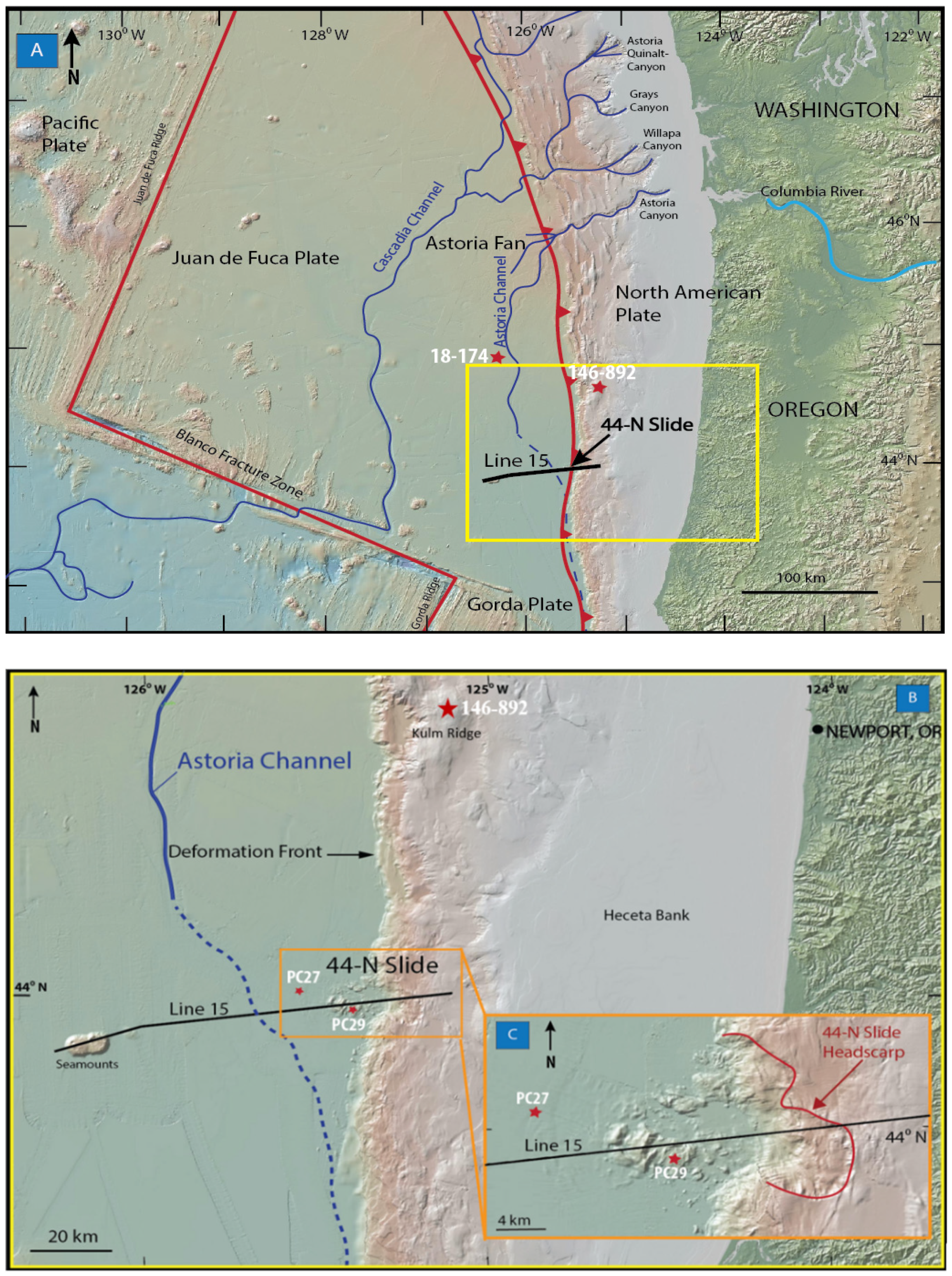
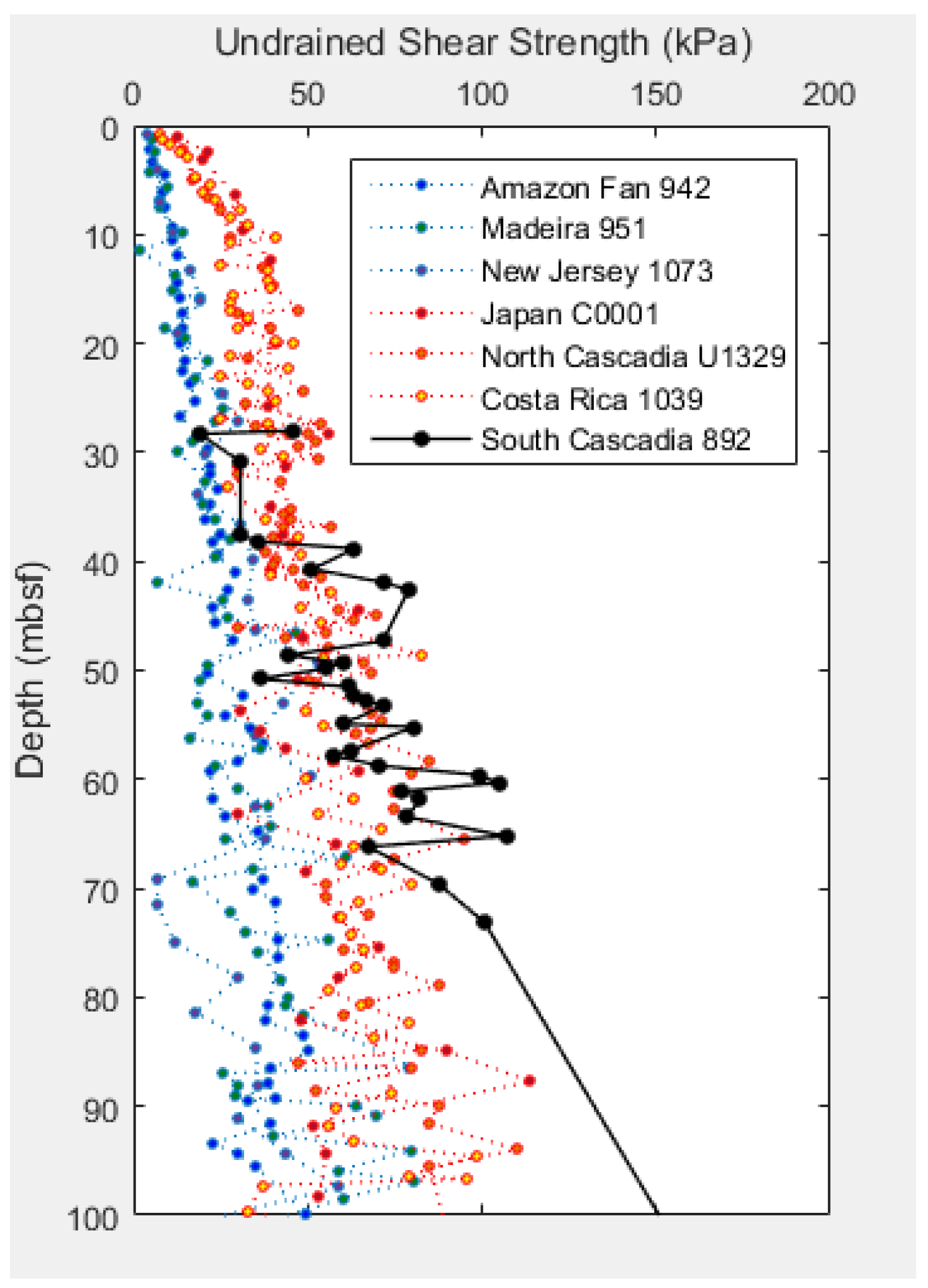
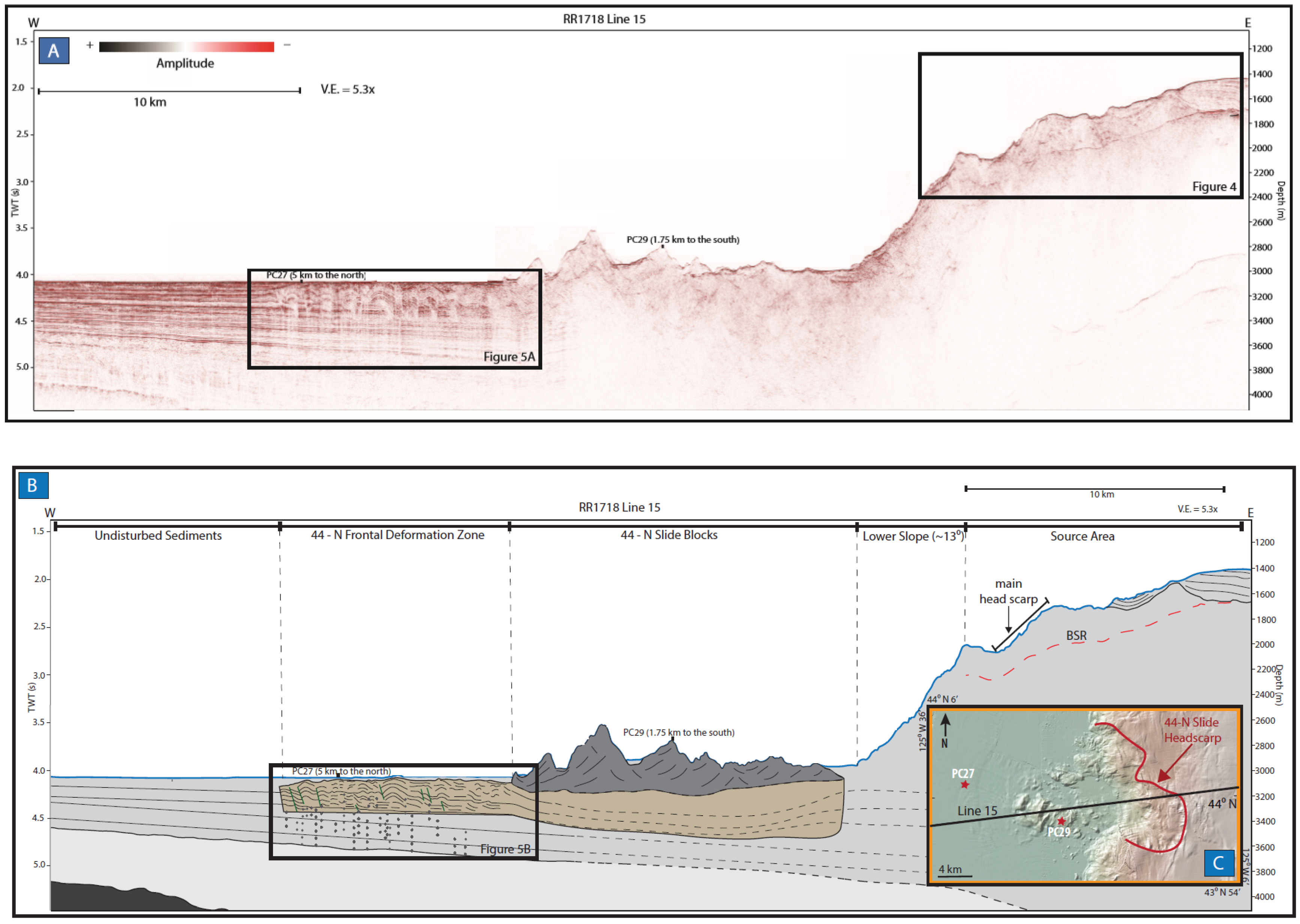

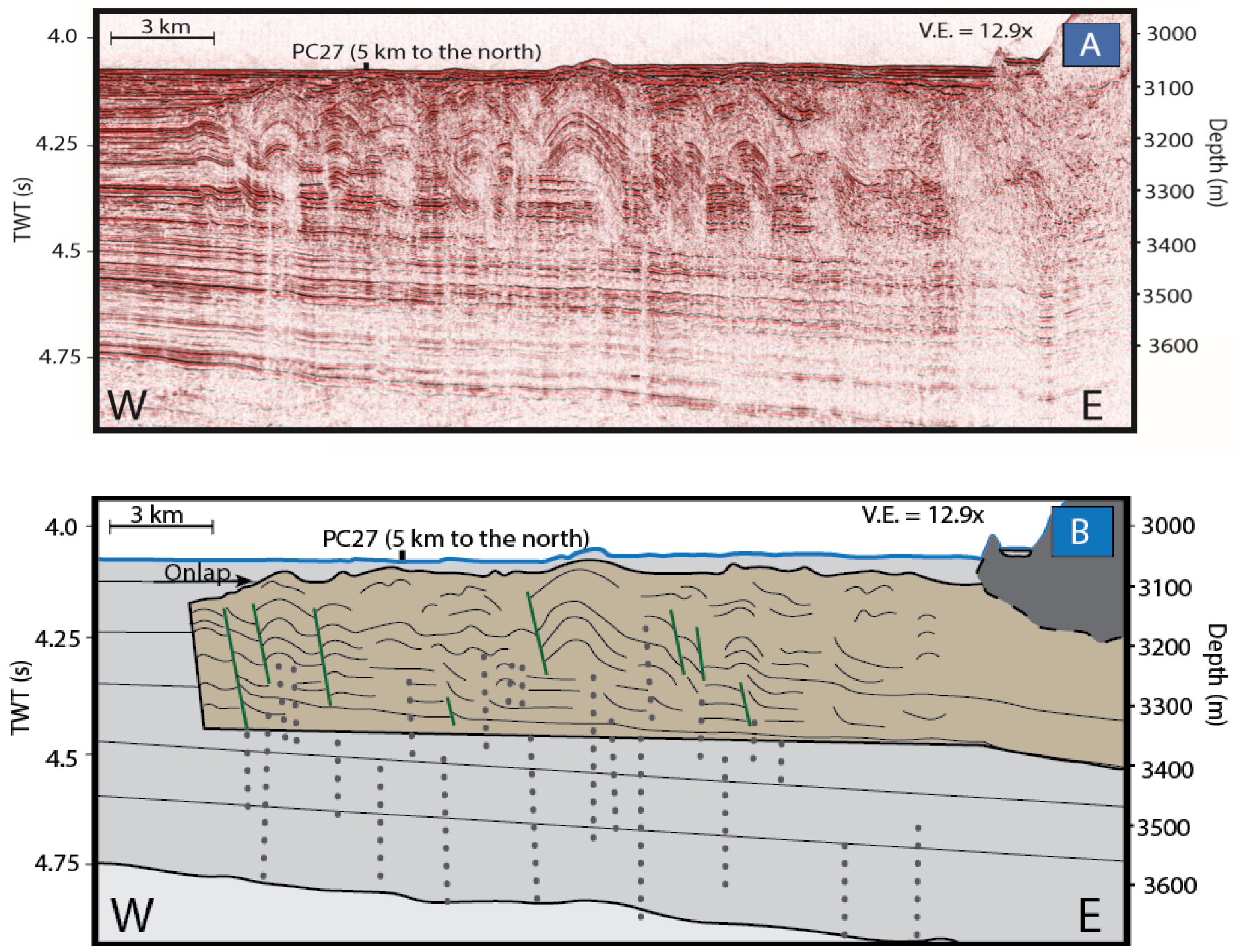
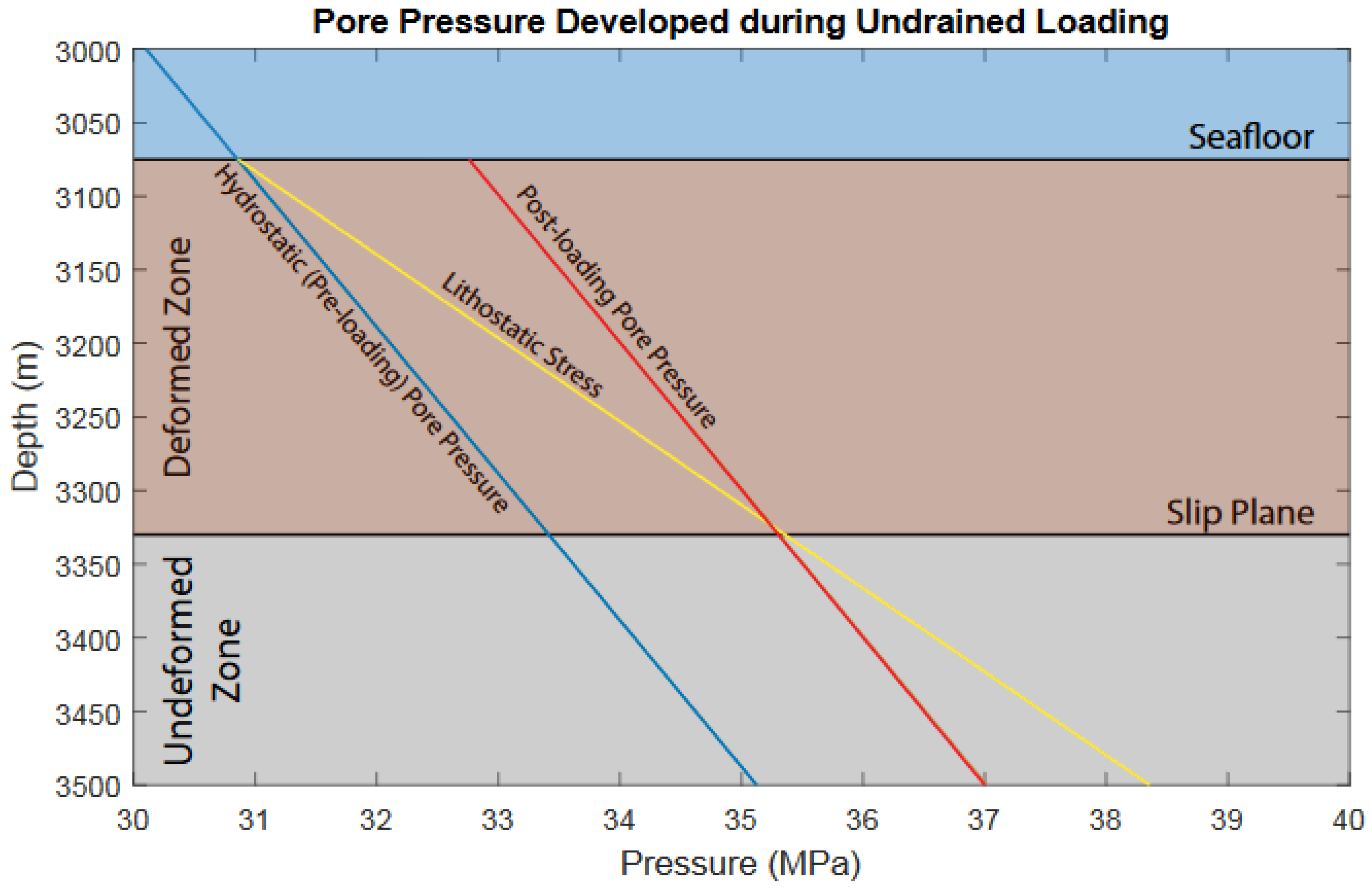
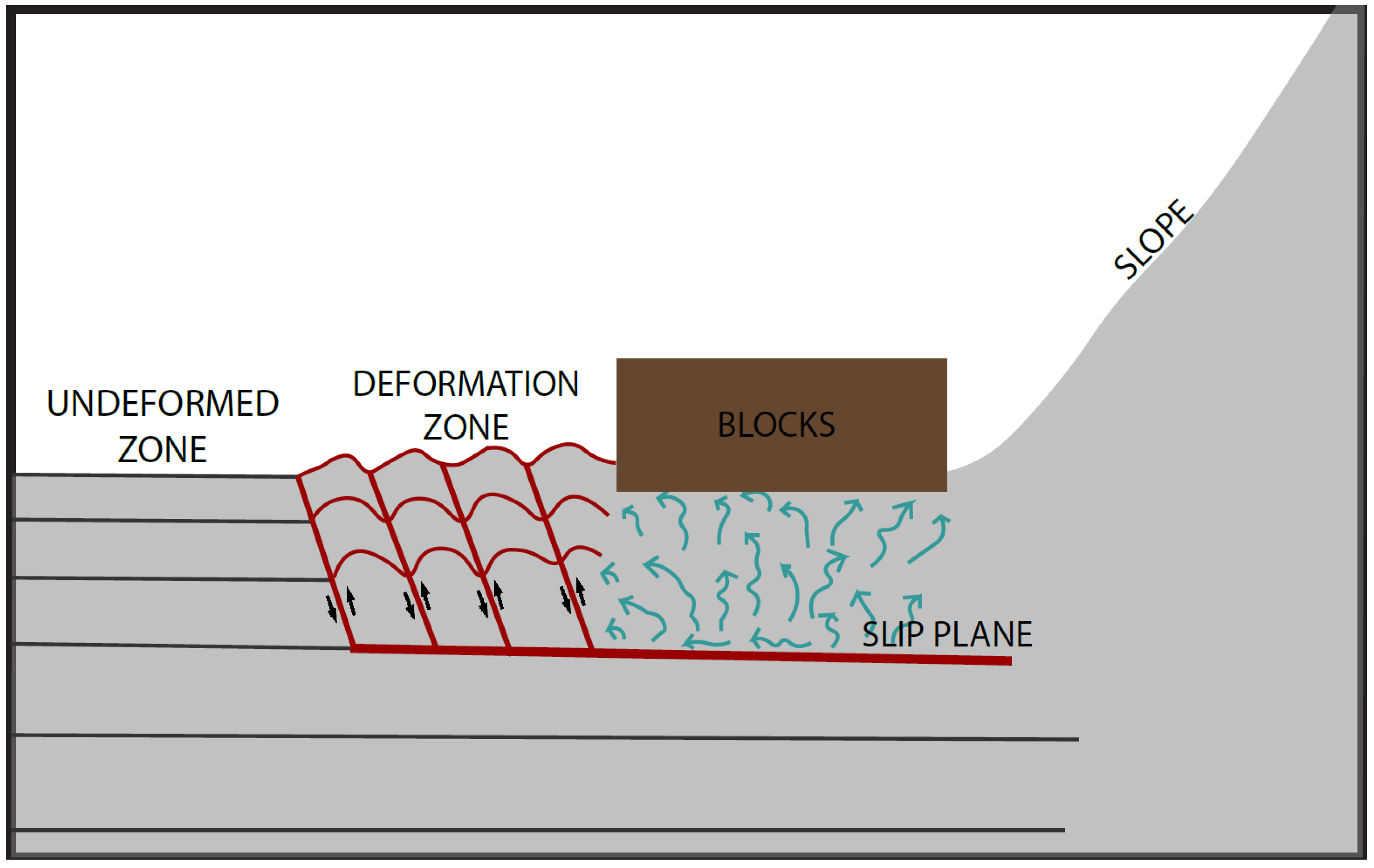
© 2018 by the authors. Licensee MDPI, Basel, Switzerland. This article is an open access article distributed under the terms and conditions of the Creative Commons Attribution (CC BY) license (http://creativecommons.org/licenses/by/4.0/).
Share and Cite
Lenz, B.L.; Sawyer, D.E.; Phrampus, B.; Davenport, K.; Long, A. Seismic Imaging of Seafloor Deformation Induced by Impact from Large Submarine Landslide Blocks, Offshore Oregon. Geosciences 2019, 9, 10. https://doi.org/10.3390/geosciences9010010
Lenz BL, Sawyer DE, Phrampus B, Davenport K, Long A. Seismic Imaging of Seafloor Deformation Induced by Impact from Large Submarine Landslide Blocks, Offshore Oregon. Geosciences. 2019; 9(1):10. https://doi.org/10.3390/geosciences9010010
Chicago/Turabian StyleLenz, Brandi L., Derek E. Sawyer, Benjamin Phrampus, Kathy Davenport, and Ashley Long. 2019. "Seismic Imaging of Seafloor Deformation Induced by Impact from Large Submarine Landslide Blocks, Offshore Oregon" Geosciences 9, no. 1: 10. https://doi.org/10.3390/geosciences9010010
APA StyleLenz, B. L., Sawyer, D. E., Phrampus, B., Davenport, K., & Long, A. (2019). Seismic Imaging of Seafloor Deformation Induced by Impact from Large Submarine Landslide Blocks, Offshore Oregon. Geosciences, 9(1), 10. https://doi.org/10.3390/geosciences9010010




